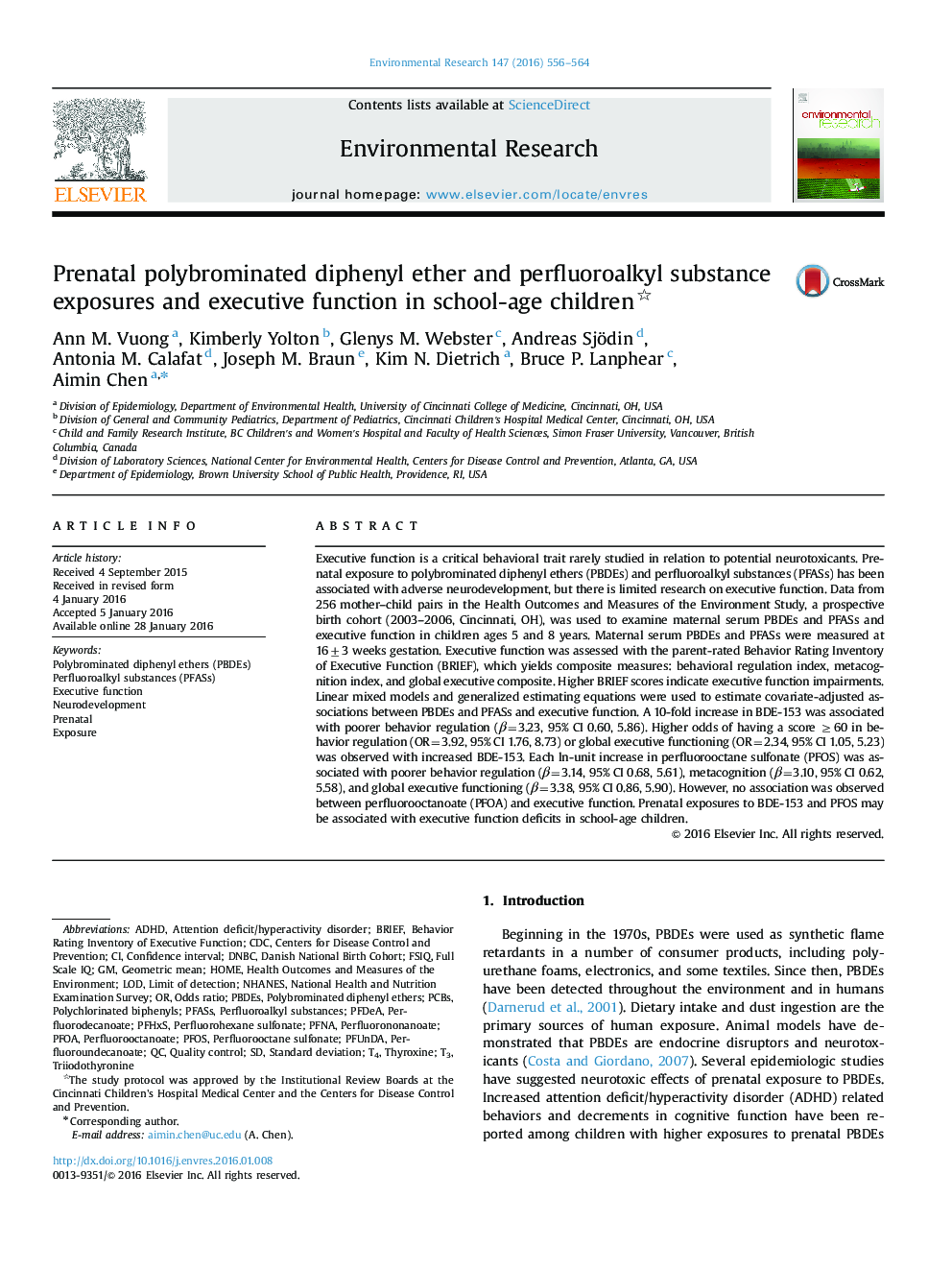| کد مقاله | کد نشریه | سال انتشار | مقاله انگلیسی | نسخه تمام متن |
|---|---|---|---|---|
| 6351686 | 1622556 | 2016 | 9 صفحه PDF | دانلود رایگان |
- Prenatal BDE-153 and PFOS was associated with poorer executive function in children.
- PBDEs were adversely associated with behavior regulation.
- BDE-47, -99, -100, -153, and âPBDEs were associated with poorer emotional control.
- PFOS was associated with both behavior regulation and metacognition impairment.
- No association was observed between PFOA and executive function in children.
Executive function is a critical behavioral trait rarely studied in relation to potential neurotoxicants. Prenatal exposure to polybrominated diphenyl ethers (PBDEs) and perfluoroalkyl substances (PFASs) has been associated with adverse neurodevelopment, but there is limited research on executive function. Data from 256 mother-child pairs in the Health Outcomes and Measures of the Environment Study, a prospective birth cohort (2003-2006, Cincinnati, OH), was used to examine maternal serum PBDEs and PFASs and executive function in children ages 5 and 8 years. Maternal serum PBDEs and PFASs were measured at 16±3 weeks gestation. Executive function was assessed with the parent-rated Behavior Rating Inventory of Executive Function (BRIEF), which yields composite measures: behavioral regulation index, metacognition index, and global executive composite. Higher BRIEF scores indicate executive function impairments. Linear mixed models and generalized estimating equations were used to estimate covariate-adjusted associations between PBDEs and PFASs and executive function. A 10-fold increase in BDE-153 was associated with poorer behavior regulation (β=3.23, 95% CI 0.60, 5.86). Higher odds of having a score â¥60 in behavior regulation (OR=3.92, 95% CI 1.76, 8.73) or global executive functioning (OR=2.34, 95% CI 1.05, 5.23) was observed with increased BDE-153. Each ln-unit increase in perfluorooctane sulfonate (PFOS) was associated with poorer behavior regulation (β=3.14, 95% CI 0.68, 5.61), metacognition (β=3.10, 95% CI 0.62, 5.58), and global executive functioning (β=3.38, 95% CI 0.86, 5.90). However, no association was observed between perfluorooctanoate (PFOA) and executive function. Prenatal exposures to BDE-153 and PFOS may be associated with executive function deficits in school-age children.
Journal: Environmental Research - Volume 147, May 2016, Pages 556-564
